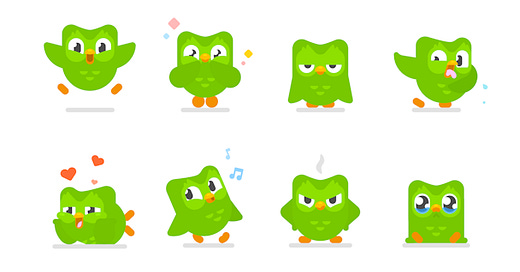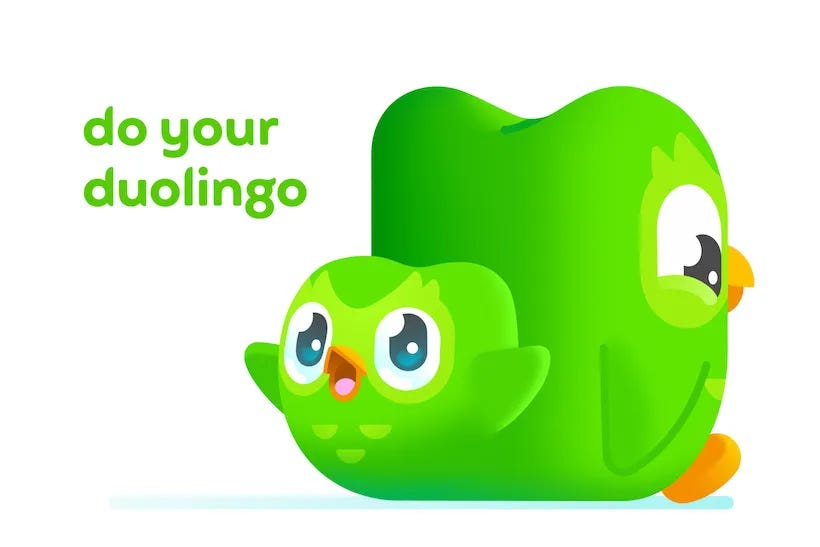Introduction
I believe technology should be a tool to improve our lives, not an ultimate goal itself. In other words, it should enhance what we consider "normal." For example, I don't think AI will eliminate jobs; instead, it can improve our ways of living and how we work. Likewise, Mark Zuckerberg designed Facebook to connect the world, and Manuel Bronstein, Head of Products at Roblox, sees it (Roblox) as a way to augment the real world.
In my opinion, the best technology solves real-world problems. That's why I'm most interested in social innovation. The OECD defines this as using technology to create solutions that improve the well-being of individuals and communities.
Luis von Ahn, the creator of the language learning app Duolingo, is a great example. Growing up in Guatemala, education was expensive and limited to the wealthy. Thanks to his mother's sacrifice, Luis received a “privileged” education. This experience inspired him to create Duolingo, aiming to provide everyone with equal access to education, regardless of their background.
Duolingo — The green owl mascot
Image credit: Duolingo
Luis von Ahn identified a major problem through personal experience: a lack of accessible education worldwide. The challenge was figuring out how to deliver education easily in such a vast world.
His solution? Leverage mobile phones! With over 68% of the world's population owning one, this meant increased access to education.
But what kind of education could be delivered effectively via mobile phones and truly improve people's lives? While Luis excelled in math, he realized its practical impact on daily life was limited compared to other subjects.
Research revealed a key insight: over 2 billion people were actively learning languages, with English being the most popular choice (over 80%). Learning a new language, unlike math, could empower people in significant ways and transform their lives.
For non-native English speakers, qualifications like IELTS and TOEFL are often requirements to pursue education or specific professions in countries like the US, UK, and Canada.
This realization fueled Duolingo's mission: "to develop the best education in the world and make it universally available." Their focus became language learning, a powerful tool for breaking down barriers and improving the lives of others.
Image credit: Duolingo
Social Innovation or Modern Capitalism?
Economic inequality is a major global challenge. Duolingo tackles this by making language learning accessible, but as a business, it also needs to make money to keep operating. This raises a question: how does Duolingo balance its mission with business revenue?
The answer lies in its freemium model. Duolingo offers a free basic service with ads, generating revenue from advertising networks. This lets users access language learning without upfront cost. However, some users find ads disruptive and prefer an ad-free experience.
Here's where things get interesting. As Luis reveals, most paying users come from developed countries like the US and Canada. This revenue from paid subscriptions helps support Duolingo's free service in developing countries like Brazil and Guatemala.
In essence, Duolingo creates a cycle: revenue from users in wealthier regions allows them to offer free access to users in less privileged areas. This way, Duolingo fulfils its mission of accessibility while remaining profitable as a business.
Bringing it back to Product Management
Value Proposition: Every successful product starts with a strong value proposition - solving a real problem for users. In Duolingo's case, the problem is clear: breaking down barriers to language learning and equal access to education. This core value shapes the entire product experience. Before diving into development, it's crucial to ask these key questions:
Always ask Why? What specific problem are we solving? (Read more here)
How are we different? What makes your product different from other products in the market?
Answering these questions ensures that every feature and improvement aligns with the product's core vision.
Usage: In building products, understanding your users is the key to retention. Identifying the problem you solve is crucial, but for any product to thrive, understanding who you're solving it for is equally important. In Duolingo's case, the target audience is individuals 18 and above who want to learn a new language. Duolingo uses gamification to drive usage. This involves incorporating game-like elements into the app. Duolingo leverages:
Streaks: Maintaining a daily learning streak motivates users to practice consistently.
Leagues: Competing with friends or other users adds a social element and a sense of friendly competition.
In-app notifications: Gentle reminders help users stay on track with their learning goals.
Achievements: Earning badges and rewards provides a sense of accomplishment and keeps users motivated.
By incorporating these gamification elements, Duolingo transforms learning into a delightful experience. This keeps users engaged and actively using the app
Product-Led Growth: Growth on Duolingo is very much centred on the product itself. In acquiring users within and outside the app. Duolingo's growth strategy revolves around the app itself – a concept called product-led growth. This means user acquisition happens both within the app (through features that encourage users to invite friends) and outside the app (through marketing efforts).
Duolingo's marketing approach is consistent across its social media platforms like TikTok, Instagram, and Twitter. They likely showcase the app's features and benefits in a way that entices new users to try it.
In essence, Duolingo leverages the strength of its well-built product as the core driver of user growth. By offering a valuable and enjoyable experience, the app itself becomes a powerful marketing tool.
Weekly Recommendations:
Podcast: Product management through the eyes of Manuel Bronstein, the Head of Product at Roblox
Articles: Gamification at Duolingo
The 5 whys
Newsletter: Framing Problems Without Solutions
Books: Hooked by Nir Eyal with Ryan Hoover






